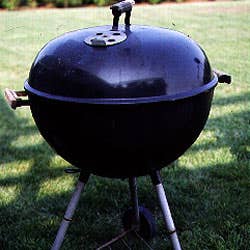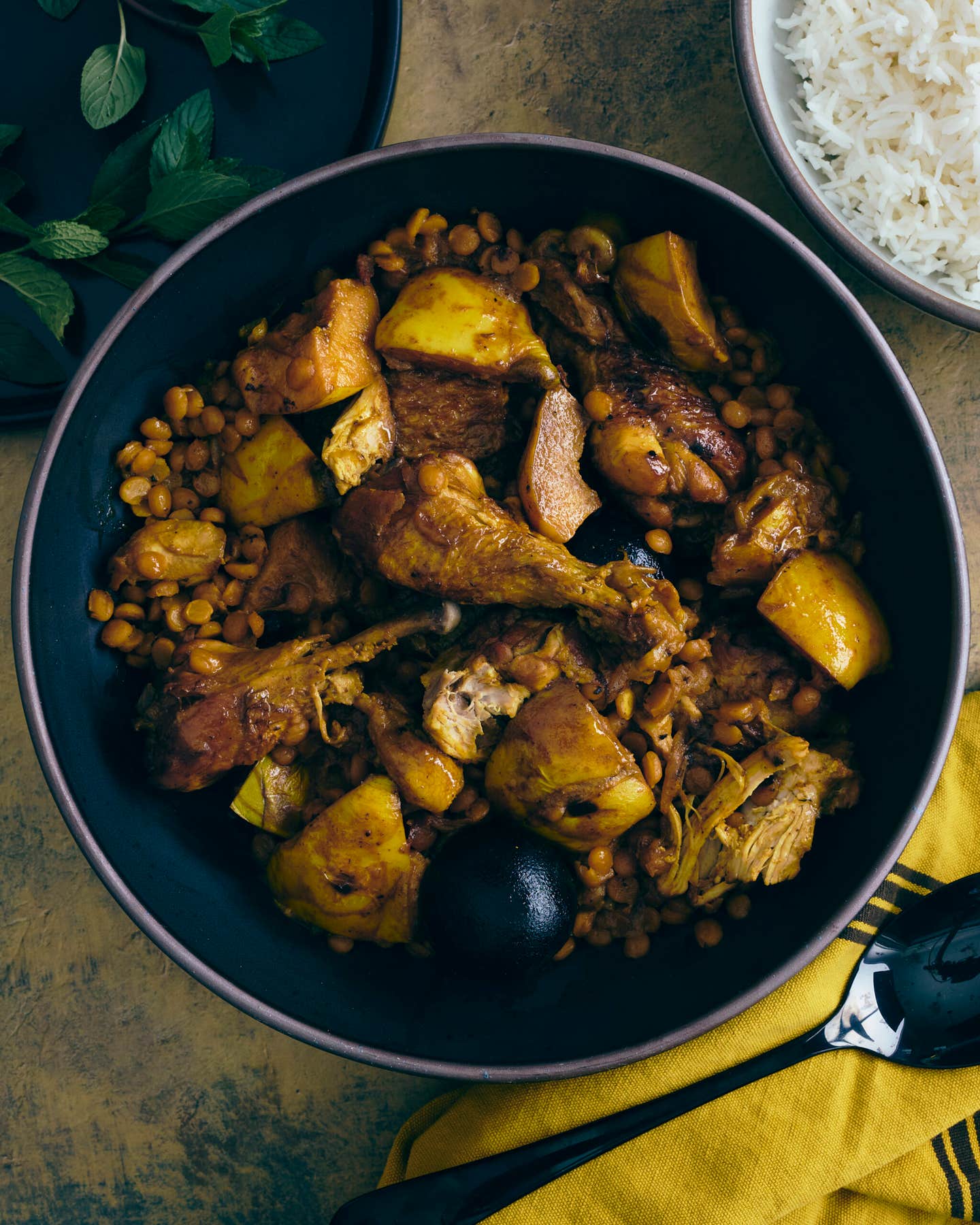
Tips, Tricks, and Techniques for Turning Out Perfect Barbecue
THE COOKER: Serious barbecuers have no problem plunking down big bucks for state-of-the-art rigs, but for beginners, advises chef and barbecuer extraordinaire Paul Kirk, "The best cooker is any one you can learn to control." That means any dry smoker (a horizontal unit with a firebox at one end, and a chimney at the other), water smoker (vertical, with room for a water pan), or even a simple grill—like the standard Weber kettle. Purists don't like gas grills for low-and-slow cooking, but say they're fine for small ribs and chicken. If you use one, you'll need a special box (or an old cast iron skillet) for wood chips.
THE CHARCOAL: Use only all-natural briquets or lump charcoal. Briquets are best for steady heat. Lump charcoal lights more easily, but because it burns hotter, it must be watched more closely. For the standard kettle grill, plan on starting with 25-30 briquets or several big handfuls of lump charcoal. These will burn for about fifty minutes; more hot coals (about ten briquets) must be added every hour to maintain the temperature.
THE SMOKE: "Don't worry about getting enough smoke," counsels Kirk. "Worry about getting too much smoke." You need wood for smoke, either chips, chunks, or logs. Kirk likes a mix of 60 percent oak, 20 percent hickory, and 20 percent apple or other fruit wood (like pecan or cherry). Mesquite is popular in Texas; alder in the Northwest. Woods that have aged at least six months burn more evenly than fresh green woods, which burn hotter and give off more smoke. Avoid resinous woods (pine, cedar, spruce), plywood, and treated woods. Use logs for pits that can handle them. Kirk recommends wood chunks, which don't need soaking; just put two or three on the hot coals when you begin to cook. If using chips, soak them for 30 minutes (otherwise they'll burn up), then scatter a few handfuls on the hot coals.
LIGHTING UP: Of all the ways to start a fire, the easiest is with an inexpensive metal chimney lighter (available in hardware stores). Just put newspaper in the bottom, fill with charcoal, then light paper. Once coals catch, transfer to grill or smoker. Unlit coals will then catch when placed around burning coal.
THE SETUP, INDIRECT: Meat, when cooked away from the heat source, is infused with pure wood smoke, rather than with the smoke from fat dripping directly on the coals. Place a drip pan under the meat to catch this fat. Any grill can be set up to cook indirectly. Light coals in chimney, then use long-handled tongs to arrange coals into a pyramid on one side of grill. (Keep a couple of lit coals in chimney, then add fresh coals so that when you need to replenish fire, these coals will be ready.) Keep grill open and let coals burn down to white ash (20-30 minutes). To test coals, hold your hand about five inches above them. The fire is ready if you can leave your hand there for five seconds. Any shorter, the fire is still too hot; longer, you're losing your heat. To simulate a water smoker, which adds moisturizing steam to smoke, put a large aluminum pan filled halfway with water next to coals. Fit grill in place, and put meat and a thermometer on grill over pan, not coals. Close lid, leaving vents partially open. Put another thermometer in a top vent. Low heat means 200°-265°.
THE SETUP, DIRECT: Placing meat directly above the heat is best for grilling or barbecuing small pieces of meat. Use a chimney to light coals, then arrange coals in a single layer on grill with long-handled tongs. After 10-15 minutes, place meat on grill.
WHILE YOU'RE AT IT: Open vents to raise heat, close to lower; add coal when temperature dips too low to adjust with vents. To maintain even heat, add preheated coals. Replenish wood chips and refill drip pan (if using) when adding coals. Don't keep checking meat, Kirk says; each time you do, precious heat and smoke escape.
Keep Reading
Continue to Next Story










